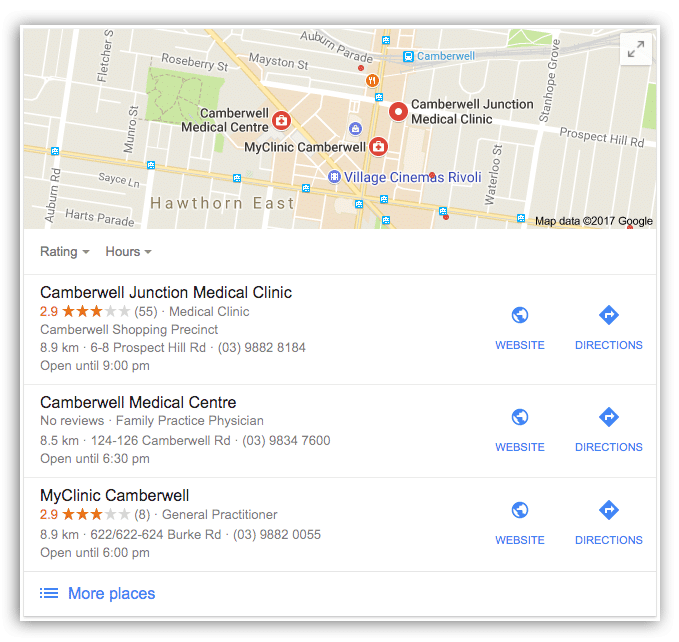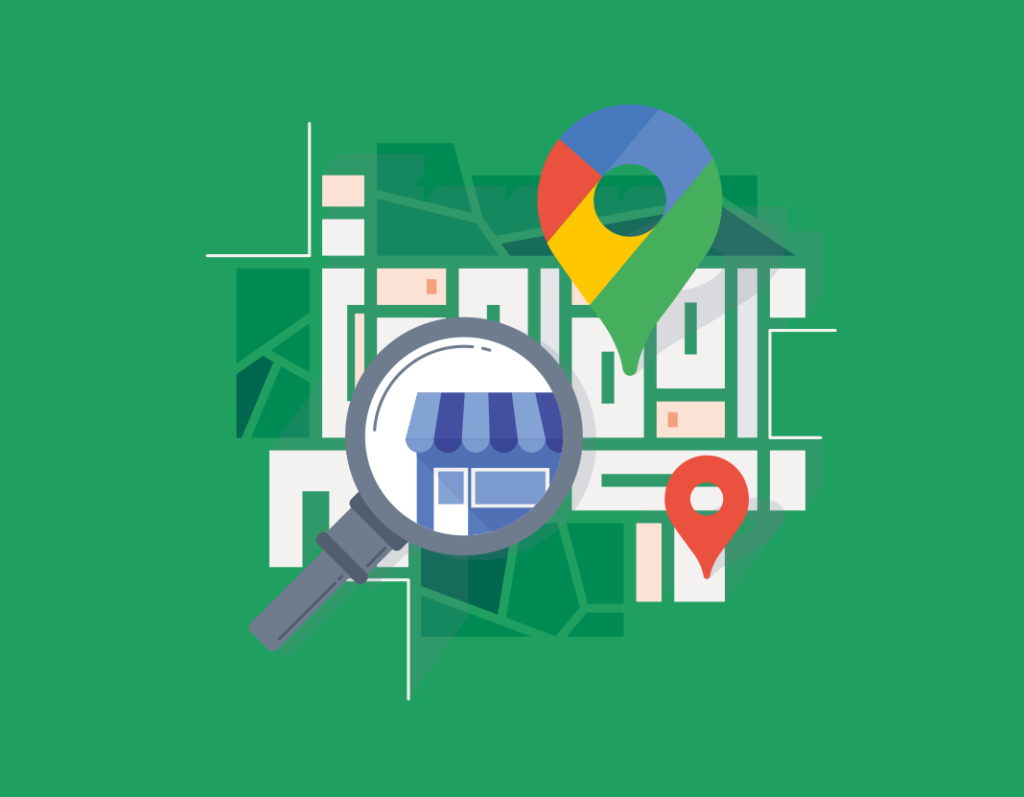And Why Having a Listing is Crucial

What is Google My Business?
Google My Business is a free business directory. It allows your clinic to be found more easily online by connecting a number of Google’s services to a single ‘profile’ of your business. Services like Google Search, Google Maps, Google Reviews and Google Ads.
Google My Business is the information you see when you’re looking at a business in Google Maps, or when a company comes up on the side of a Google search results page.
Setting up a Google My Business account is probably the most important move you can make in your marketing. It takes 10 minutes and can easily double your bookings, even if you don’t have a website.
How does Google My Business work?
To understand how Google My Business works, you first need to familiarise yourself with two terms: branded search and local search.
Branded search
Over the last few years, there has been a significant change in the way people find websites. Most web browsers, on most devices, now have search built-in. This means that instead of typing in your website address, patients are now much more likely to simply search your medical centre name because it’s faster.
Branded search is when Google thinks the searcher is looking for a specific business listed in its directory. This would occur if a patient typed your brand name directly into the search bar.
Instead of showing a map, or just a page of listings, Google brings all your information up on the right hand side of the screen. All of this information comes directly from what you (or your customers) have told Google My Business.
Branded search is fairly black and white; you’re either winning when you Google your brand name, or you’re not. There is no second place, especially on mobile.
If you’re winning, great! Your priority should be to simply make a great first impression. Generally, if someone has searched for you directly, they’re very likely to engage with you by clicking your website link, opening maps to get directions, or picking up the phone to call you.
You just need to make sure you don’t scare them away with bad reviews, poor images or inaccurate information (like opening hours telling them you’re closed when you’re not, or a wrong phone number leading to a dead line).
If you’re not winning your own brand search, your priority should be to find out why. If you’re not being listed because your Google My Business doesn’t exist, we suggest you go ahead and create a listing using our Google My Business Guide.
If you’re not being listed for your own name, but your Google My Business does exist, this more than likely means your listing was not set up properly. Either your name isn’t correct, or you haven’t properly verified your address and phone number. Again, our best recommendation is to go through the steps outlined in the blog link above and to make sure you’ve completed everything.
If you’re still having issues and you’re a HotDoc customer, you’re welcome to get in touch with your Customer Success Manager and we’ll help you out.
Local search
The second type of search is local search. Local search is when Google thinks the person searching is looking to browse multiple businesses in a particular area. This would occur if a patient typed in something like ‘Doctor near me’ or ‘Medical Practices in Melbourne’.
Instead of showing the normal search listings or a business profile, Google displays local search results on a map.
On mobile (the most common device searching for a medical practice), search results are even more focused on displaying Google My Business listings.
Within local search, there are two different ways Google may display this map.
- Local Search: Current Location
- Local Search: Specified Area
Local Search: Current Location
Current location searches (sometimes called proximity search) is when Google uses the searcher’s GPS location to determine the relevant search results. If you searched ‘Medical Center’ in Google right now, it would show you a map with your current location fairly close to the middle of the map. (You may have to allow it to see your location first)
Generally speaking, the map shown will order results based on their distance from the searcher, meaning the closest practice usually wins.
However, this is not always the case. Sometimes there will be a situation, like the example below, where the closest clinic doesn’t come first. This is because the closest clinic has been penalised by Google.
Clinics can be penalised by Google for a number of reasons, including:
- The clinic is currently closed while neighbouring clinics are open
- The clinic has very few customer reviews
- The clinic has very poor customer reviews
- The clinic hasn’t verified its address and/or phone number
- The clinic has a very poor website compared to neighbouring clinics
Google has also written a guide for troubleshooting why you can’t find your listing.
To make sure you’re ranking as well as possible in location based search results, make sure all your information is verified, your opening hours are up-to-date, and you’re actively managing your customer reviews. For help with managing customer reviews, download The Digital Marketing Guide for General Practice.
Local Search: Specified Location
If you search for ‘Medical Centre Richmond‘, the current location is disregarded because a specific suburb is listed in the search terms (even if the searcher is on the other side of the world). Instead, Google will base its map on the suburb specified.
The map will look something like this:
In this case, the order of the results is not based on the distance from the person searching, but on other information, such as:
- Quantity of reviews
- Average rating of reviews
- Completeness of validated information (address, phone number, website etc)
- Opening hours (if one clinic is open while others are closed, it ranks higher)
This format of search: ‘Medical Centres in [Suburb Name]’ or ‘Doctors in [Suburb Name]’ is the most common type of unbranded search for medical practices.
Google My Business FAQs
How do I set up Google My Business?
For a detailed guide on how to set up Google My Business, download Google My Business Guide.
How do I get my Google My Business profile from someone else?
If you’ve claimed your Google My Business and lost your logins, or someone else entirely has claimed your business, this can be tricky.
Step one would be to request ownership from Google. If that doesn’t work, you may have to try a few other things to get access. Luckily, there is a guide here to help you resolve the issue.
What happens if I don’t claim my Google My Business listing?
If you don’t claim your business, Google may create one for you anyway. If this happens, they will attempt to figure out all the details of your business through other means, such as:
- Searching for information on your website
- Asking Google users to update information for you
These automatically generated results don’t rank as well as verified, owned results. They also tend to be inaccurate and misleading for your customers. We can’t think of any valid reason why you would not want to claim your listing.
We don’t want user reviews, how do we turn them off?
Unfortunately, you can’t. We wish there was more we can say about it, but it’s simply not possible. Really, the choice you have is whether you manage reviews or not. Our only advice here would be to say, if you think managed online reviews is risky, try unmanaged online reviews.

FREE GUIDE
A Guide to Google My Business for Practices
We show you how to set up your listing then run through a 10-step checklist to improve your listing so patients find you more easily on Google.



